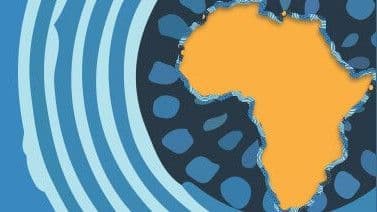This year, we celebrate 15 years of the Maputo Protocol’s enactment. Officially called Protocol to the African Charter on Human and Peoples’ Rights on the Rights of Women in Africa, it remains “the main legal instrument for the protection of the rights of women and girls in Africa”.
The text calls on all countries to ensure “that the right to health of women, including sexual and reproductive health is respected and promoted” (Article 14), and reinforces the importance of safe abortion access – at least under certain circumstances.
Since its inception, on July 11th 2003, the agreement has been an exceptional advancement for abortion advocates. It created a more protective framework for women and girls who were living under very restrictive sexual and reproductive health policies, becoming the most concrete legal tool to advance the question of abortion and integrate it within national laws.
However, a decade and a half later, many nations have yet to make it a reality. This begs the question: is the Maputo Protocol still the most progressive tool for women’s and girls’ reproductive rights in Africa? Abortion experts are concerned that by focusing on exceptions and specific circumstances, it could be preventing women in Africa from accessing safe abortion services instead of promoting their full autonomy.
In retrospect, a few questions are being raised. Did we settle for too little or was it the only morally acceptable conditions for governments to sign the treaty at that time? Should advocacy groups compromise for minimum bills that governments would accept, even though it might not meet the full range of needs on the grounds? Or should they keep pushing indefinitely for an ideal text that might never pass?
Abortion & Reproductive Justice: The Unfinished Revolution III
A group of 25 representatives from ten different African countries had the opportunity to share experiences and to address challenges on access to safe abortion during the Abortion & Reproductive Justice 3rd Conference. Under the coordination of the International Campaign for Women’s Right to Safe Abortion, organisations joined a three-day discussion which included the relevance of the Maputo Protocol in today’s context.
What exacly does the Maputo Protocol say?
Maputo Protocol’s Article 14 is divided in Article 14.1 and Article 14.2, with Paragraphs A, B and C. Article 14.1 presents the meaning of sexual and reproductive rights of women and girls. And Article 14.2 focus on concrete actions that States must undertake to respect such rights.

Source: http://www.achpr.org/
Paragraph A from Article 14.2 calls on governments to “provide adequate, affordable and accessible health services, including information, education and communication programmes to women especially those in rural areas”.
This leaves enough room for interpretation for women to access all types of services, including safe abortion. Broader terminology often makes it easier for pro-choice lawyers to defend women’s rights. It also avoids the constant need to amend texts, which is too often used by opponents as an opportunity to pull back on existing rights.
Unfortunately, the text did not stop there. Paragraph C “protect[s] the reproductive rights of women by authorizing medical abortion”, but only “in cases of sexual assault, rape, incest, and where the continued pregnancy endangers the mental and physical health of the mother or the life of the mother or the foetus”.
Maputo Protocol fails to acknowledge that socioeconomic concerns or limiting childbearing are some of the primary motives behind abortion searches. As a result, it adds an extra barrier against those who need abortion access the most. Also, on-the-ground reality is not so simple. Even when women fall into one of the four allowed categories by the Protocol, they can still be “denied care even when they legally qualify for an abortion”.
Paragraph C also endorses the notion of women as victims who should access abortion procedures on the grounds of the “harm-reduction” principle. Absolutely nowhere the agreement places abortion as a matter of choice and of acknowledging women’s power to choose over their bodies. This is a very common patriarchal argument.
Because we’re considered to be men’s property, laws tend to protect women from morally unacceptable abuses, but hardly empower us to make choices for ourselves.
Impacts of the Maputo Protocol
It’s challenging to measure the effects brought by African document. But we do know that it helped building a more consistent legislation throughout the continent. According to experts, “evidence from the various chapters shows that domestic actors – policy makers, legislators, judges and domestic civil society organisations – are the primary drivers of impact of the African Charter and the Maputo Protocol”.
It is also true that even when a particular government signs an international treaty, the endorsement of national institutions remains a challenge to its full implementation, as the reality in Ghana has shown us.
The agreement has inspired the revision of many national laws, like the one from the Democratic Republic of Congo. In June 2018, DRC has finally incorporated the Maputo Protocol commitments to its own legislation. We now hope that it will follow with a concrete upgrade of its services.
We must remember that most African governments would not have agreed to more than these four grounds, back in 2003. Even now, some countries haven’t yet ratified it. That’s the case in Uganda, Kenya and Cameroon, which excludes themselves from the obligation to implement abortion related provisions.
Looking at the future
The total decriminalization of abortion in the African continent is yet to be seen. And as long as abortion is not fully recognized as a standard health service, unsafe abortions will keep on costing lives.
So our initial question remains. Should we have ever accepted the Maputo Protocol in the first place? Refusing it could have left us with no legal framework to ensure at least some abortion rights to women and girls of today. With no starting point for a conversation around sexual and reproductive equity.
On the other hand, it is possible that we have contributed to further perpetuating stigmas, by endorsing a treaty that excludes whoever doesn’t fit in the victim’s role. We’re far from living in a perfect world – and advocates are constantly reminded of their short and long-term goals.
We can’t change our past – and we certainly couldn’t have done better back then. But as we study our future options, perhaps we should interrogate ourselves. Is it time for a new text to be embraced? Time for us to demand that our countries legislate based on women’s choice and autonomy?
At safe2choose, we understand that no abortion law is the best law a country could have. Access to safe abortion and comprehensive sexual and reproductive healthcare do not belong to a Code of Law anymore than any other medical procedure.
Whatever the adopted strategy might be, it’s clear that women’s movements and abortion advocates seem to be more aligned than ever when it comes to abortion rights. We believe that, regardless of our reasons, a woman should ALWAYS be able to make the choice to keep or to terminate her pregnancy. And we won’t settle until each of our countries ensures universal means for us to do so in all safety and dignity.
By Pauline Diaz
safe2choose Facebook / Instagram / Twitter
PS. This article was made possible because of the tremendous contribution of all individuals and organizations who have joined the conversation at the Abortion & Reproductive Justice 3rd Conference. A big thanks to the following groups:
- AIDS Foundation (South Africa)
- Amnesty International (South Africa)
- Centre for Human Rights (University of Pretoria, South Africa)
- Centre for Reproductive Rights (Kenya)
- Coalition for the Prevention of Unsafe Abortion (COPUA) (Malawi)
- COHERINET (Uganda)
- Curtin University (Australia)
- Gender Health and Justice Research Unit (University of Cape Town, South Africa)
- HowToUseAbortionPill (Global)
- Human Rights Awareness and Promotion Forum (Uganda)
- Ibis Reproductive Health (USA)
- Ipas Africa Alliance (Kenya)
- KMET (Kenya)
- Legal Resources Centre (South Africa)
- Marie Stopes Uganda (Uganda)
- Medical Association of Malawi (Malawi)
- Nifin’akanga (Madagascar)
- Nyale Institute (Malawi)
- Planned Parenthood Association (Zambia)
- safe2choose (Global)
- Sexual and Reproductive Justice Coalition (South Africa)
- The Ministry of Social Development (South Africa)
- Yale University (USA)
- YouthFirst (Madagascar)


